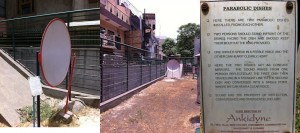 Sometimes on the subway my husband and I play a game. We choose a person and silently take in the details, from the obvious physical characteristics to the more subtle indicators of who this person is and what type of life he or she might lead (Is that a wedding ring? What’s the title of the book he’s reading, and is he really reading it? Why does she keep checking her watch? Look how she’s noticing her reflection in the window). We assemble narratives, which we share with each other later on, using the observed details to explain and defend until we combine our efforts into one story of a stranger we will most likely never see again. Some might call us nosy, but I prefer to think of us as curious. Either way, my husband and I are shameless. At restaurants we eavesdrop. One of us will catch a juicy tidbit at the next table and widen our eyes, and whatever conversation we were having will stop as we both lean forward and listen.
Sometimes on the subway my husband and I play a game. We choose a person and silently take in the details, from the obvious physical characteristics to the more subtle indicators of who this person is and what type of life he or she might lead (Is that a wedding ring? What’s the title of the book he’s reading, and is he really reading it? Why does she keep checking her watch? Look how she’s noticing her reflection in the window). We assemble narratives, which we share with each other later on, using the observed details to explain and defend until we combine our efforts into one story of a stranger we will most likely never see again. Some might call us nosy, but I prefer to think of us as curious. Either way, my husband and I are shameless. At restaurants we eavesdrop. One of us will catch a juicy tidbit at the next table and widen our eyes, and whatever conversation we were having will stop as we both lean forward and listen.
I have been a people-watcher all my life, and my home, New York City, is the perfect place to indulge. People are endlessly fascinating with their complexities and contradictions, their histories and quirks. But what really pulls me in is the raw humanness we all share—that mash-up of love, uncertainty, fear, and want swirling around just below the surface. We are more alike than we are different, yet these common vulnerabilities are the ones we guard most carefully, ashamed and afraid of the judgment of others, or even ourselves. When we let those vulnerabilities slip through—that is a moment of beauty.
If asked why I write, I could give many answers: compulsion; the joy of words; the freedom in creation; a desire to leave a mark, however small, on the world. But, really, I write for the same reason I read, and the same reason I people-watch: to learn about others and try to get at that common, messy human core. My novel, Spark, addresses subjects that have interested me for a long time; I’ve written elsewhere about my initial inspiration and the research involved. But the actual act of putting pen to paper began with one character, the narrator, Andrea. Her name came to me on a walk one afternoon and with it a feeling of anguish; I understood that she was a woman fighting to gain control and losing badly, although I didn’t know why yet. I wrote her name down in my notebook and began listing everything about her. From there, the relationships then the themes of the book revealed themselves to me.
Almost all my fiction begins this way, with one character coming up to me out of the ether. As I write, I feel that character pulling me along, as if the story is already there, the character impatient for me to uncover it. I’m sure my people-watching has helped, the details filed away in my subconscious for later use.
In my writing I don’t know if I’ll ever be able to bring out that messy human core as completely, or with as much clarity, as I would like, but it gives me something to strive for. And in the process, I find myself feeling more connected to those beautiful strangers on the subway.

